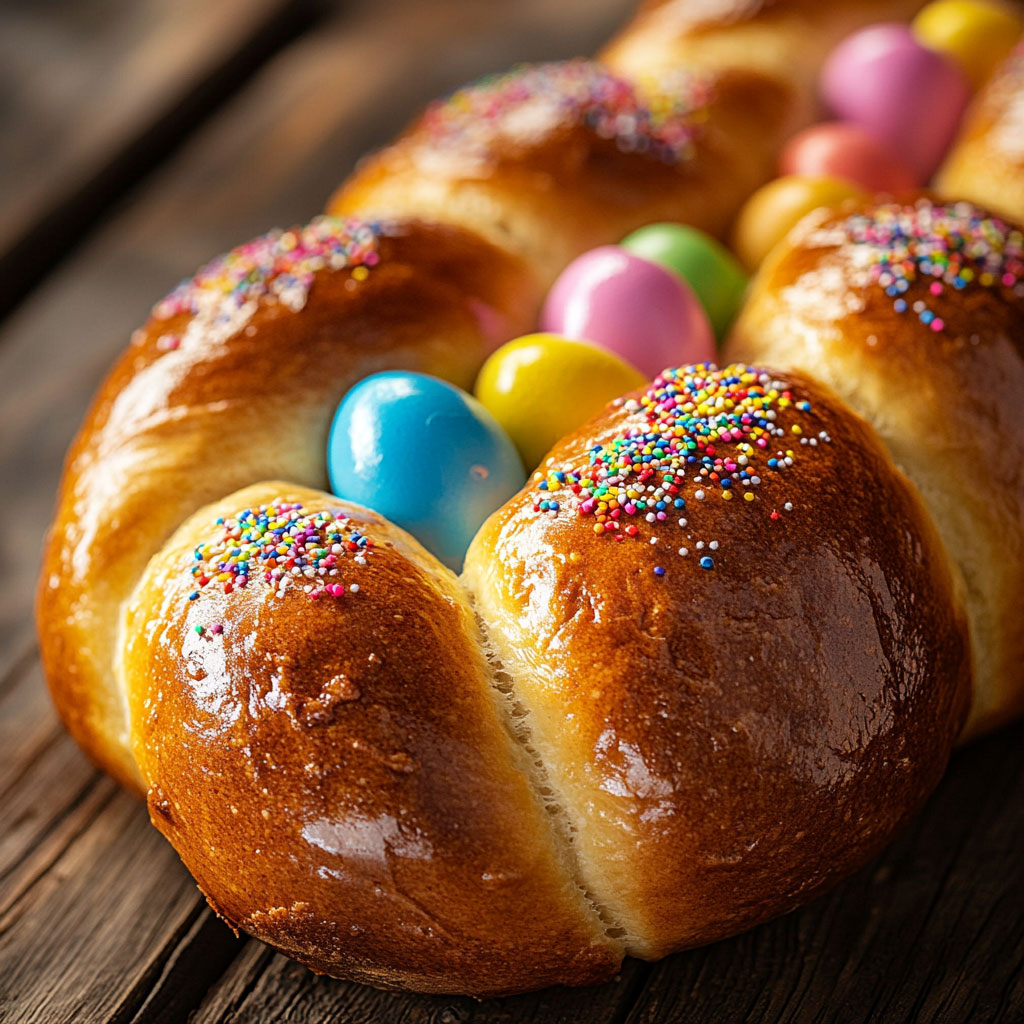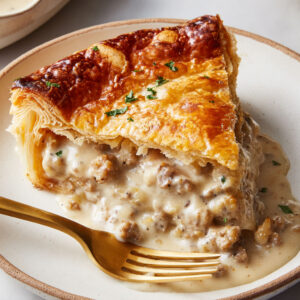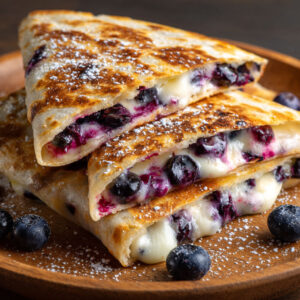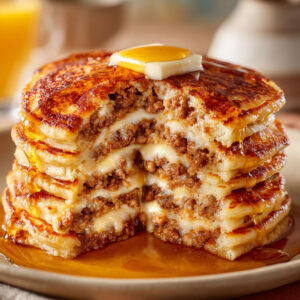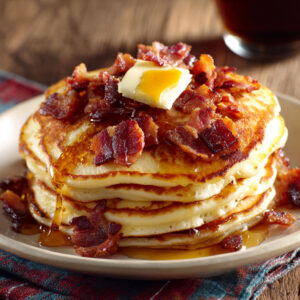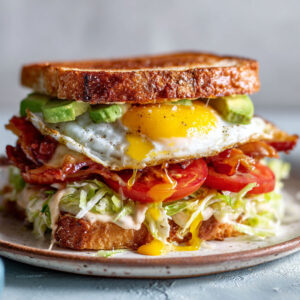Easter is a time for celebration, renewal, and gathering with loved ones. What better way to mark the occasion than with a stunning homemade Easter bread? Pane di Pasqua is a traditional Italian sweet bread, beautifully braided and adorned with vibrantly colored eggs, making it a festive centerpiece for your holiday table.
This bread is slightly sweet with a soft, fluffy texture, perfect for pairing with butter, jam, or even a drizzle of honey. The colorful eggs, baked directly into the dough, symbolize new life and add a cheerful touch to the presentation. Whether you’re hosting Easter brunch or simply want to embrace a cherished tradition, this recipe is sure to impress both family and friends.
Making Easter bread from scratch may seem intimidating, but it’s easier than it looks. With a few basic ingredients and a little patience during the rising process, you’ll achieve a bakery-quality loaf with a golden-brown crust and a tender, airy interior. The key is allowing enough time for the dough to rise properly and ensuring the eggs are nestled securely within the braid.
ADVERTISEMENT
Let’s get started on this delightful Easter bread that will bring warmth and joy to your holiday table.
Servings and Timing
Servings: 1 large braided loaf (6-8 servings)
Total Time: 3 hours (including rising time)
Bake Time: 25-30 minutes
Ingredients
- 3 ½ cups all-purpose flour
- ¼ cup granulated sugar
- 1 packet (2 ¼ tsp) active dry yeast
- ½ cup warm milk (about 110°F)
- 2 tbsp unsalted butter, melted
- 2 large eggs
- ½ tsp salt
- ½ tsp vanilla extract (optional)
- 3-5 raw, dyed eggs (do not cook beforehand!)
- Sprinkles (optional, for decoration)
Instructions
-
Activate the yeast: In a small bowl, combine warm milk, sugar, and yeast. Let it sit for about 5-10 minutes until foamy. If the yeast doesn’t activate, start over with fresh yeast.
-
Prepare the dough: In a large mixing bowl, combine the flour and salt. Add the yeast mixture, eggs, melted butter, and vanilla extract. Stir until a dough forms, then knead on a floured surface for 8-10 minutes until smooth and elastic.
-
First rise: Place the dough in a greased bowl, cover it with a clean kitchen towel, and let it rise in a warm place for about 1.5 hours or until doubled in size.
-
Shape the bread: Punch down the dough and divide it into three equal portions. Roll each portion into a long rope, then braid them together. Form the braid into a circle if desired, pinching the ends to seal. Gently nestle the dyed eggs into the braid.
-
Second rise: Cover the shaped dough and let it rise again for 30-45 minutes. Meanwhile, preheat your oven to 350°F (175°C).
-
Bake: Brush the risen dough with an egg wash (1 beaten egg mixed with 1 tbsp milk) for a shiny golden crust. If using, sprinkle with festive decorations. Bake for 25-30 minutes until golden brown and cooked through.
-
Cool and serve: Let the bread cool slightly before slicing. The eggs will be fully cooked during the baking process. Serve warm with butter or jam for a delightful Easter treat.
Variations
- Flavored Easter Bread: Add citrus zest (lemon or orange) to the dough for a bright, aromatic touch.
- Chocolate Chip Easter Bread: Fold mini chocolate chips into the dough before braiding for an extra indulgent twist.
- Nut and Dried Fruit Version: Mix in chopped almonds, walnuts, or dried fruits like raisins or cranberries.
Tips
- Use Raw Dyed Eggs: The eggs should be raw before baking as they will cook perfectly in the oven.
- Avoid Overbaking: Check for doneness at 25 minutes. The bread should be golden brown, and a tap on the bottom should sound hollow.
- Let It Cool Completely: Allow the bread to cool before slicing to maintain its soft texture.
This traditional Easter bread is not just delicious but also a meaningful symbol of the holiday. Whether you’re continuing a family tradition or trying something new, this festive loaf is sure to become a favorite part of your Easter celebrations. Enjoy!
